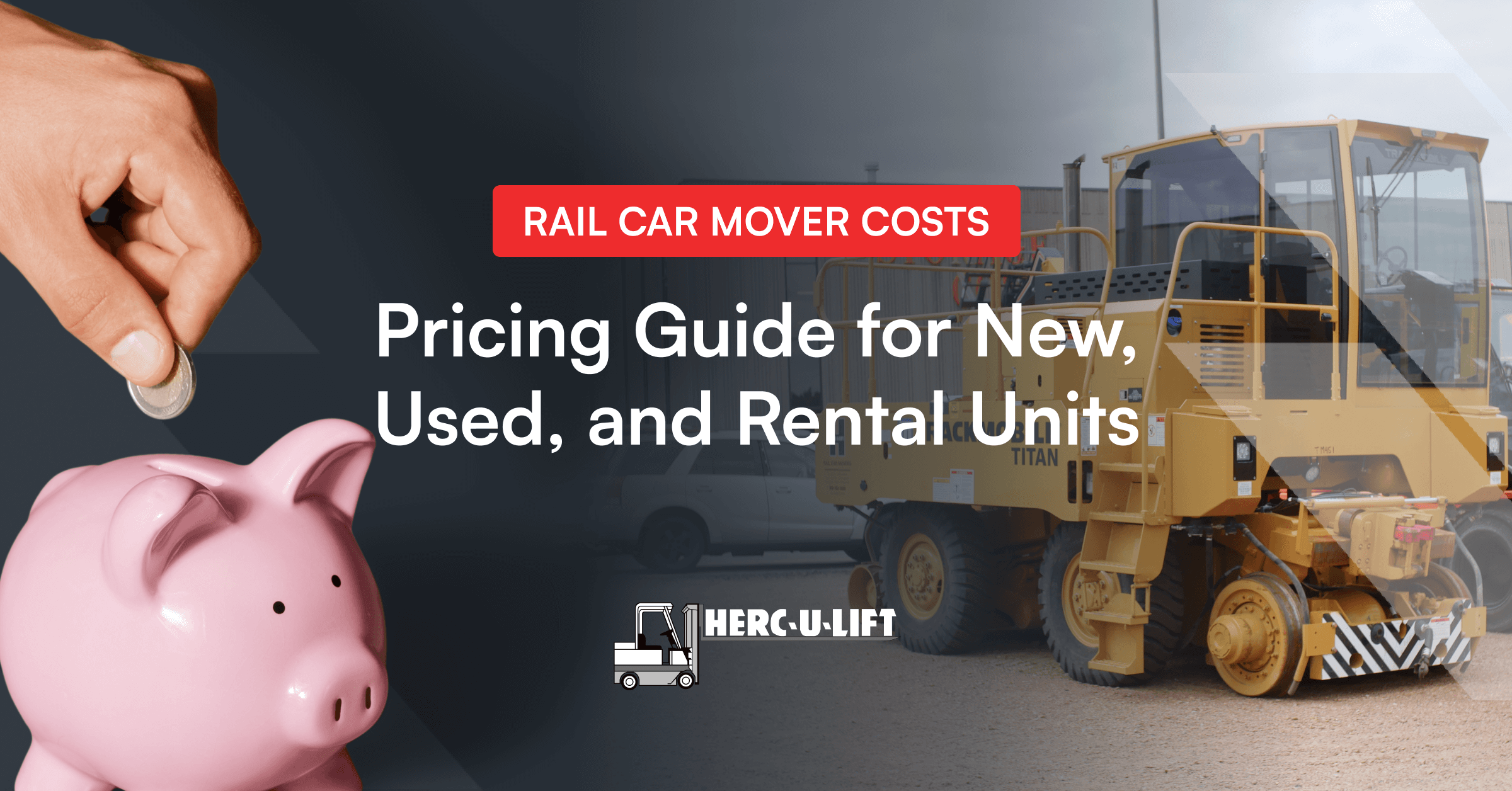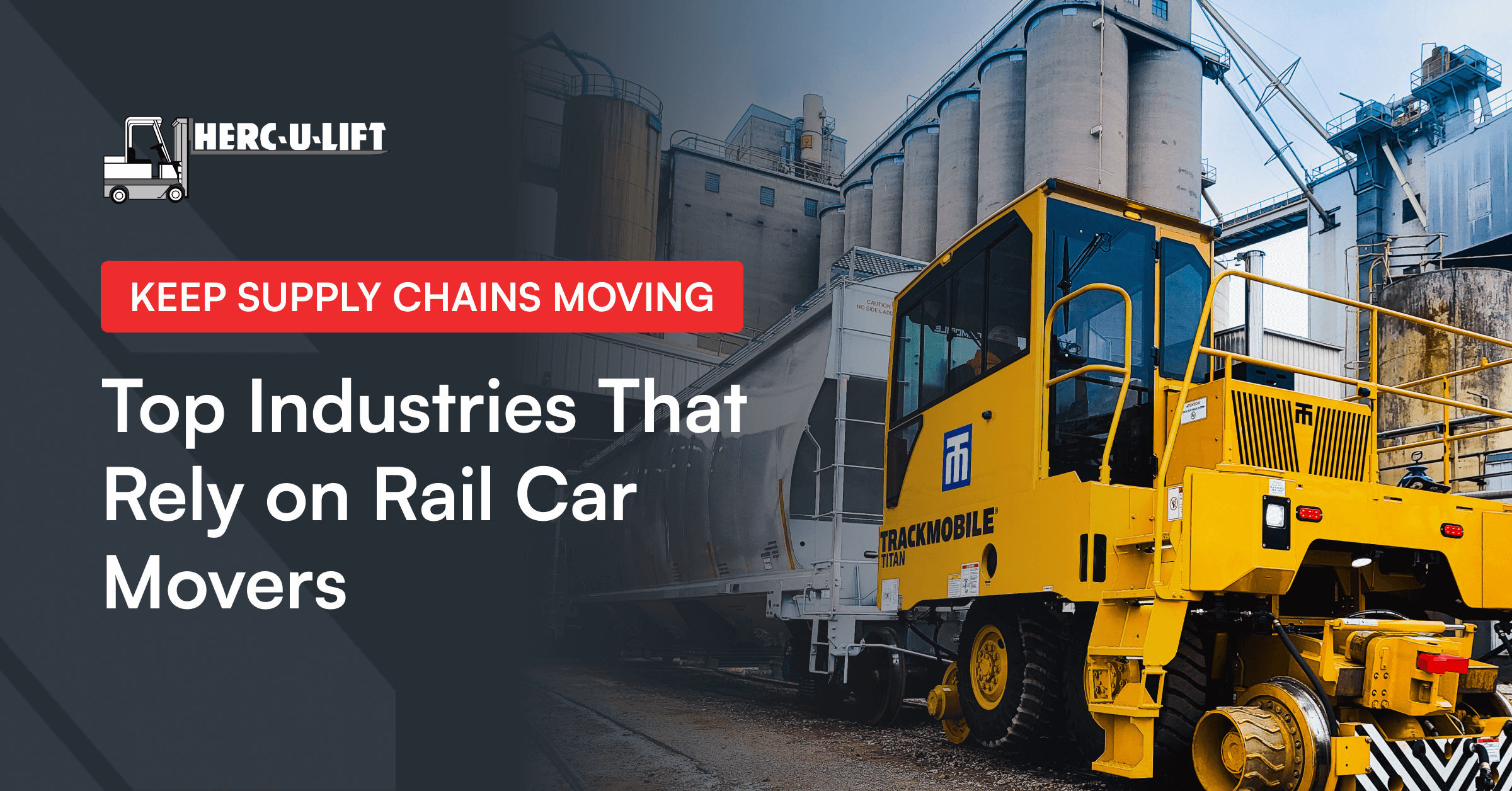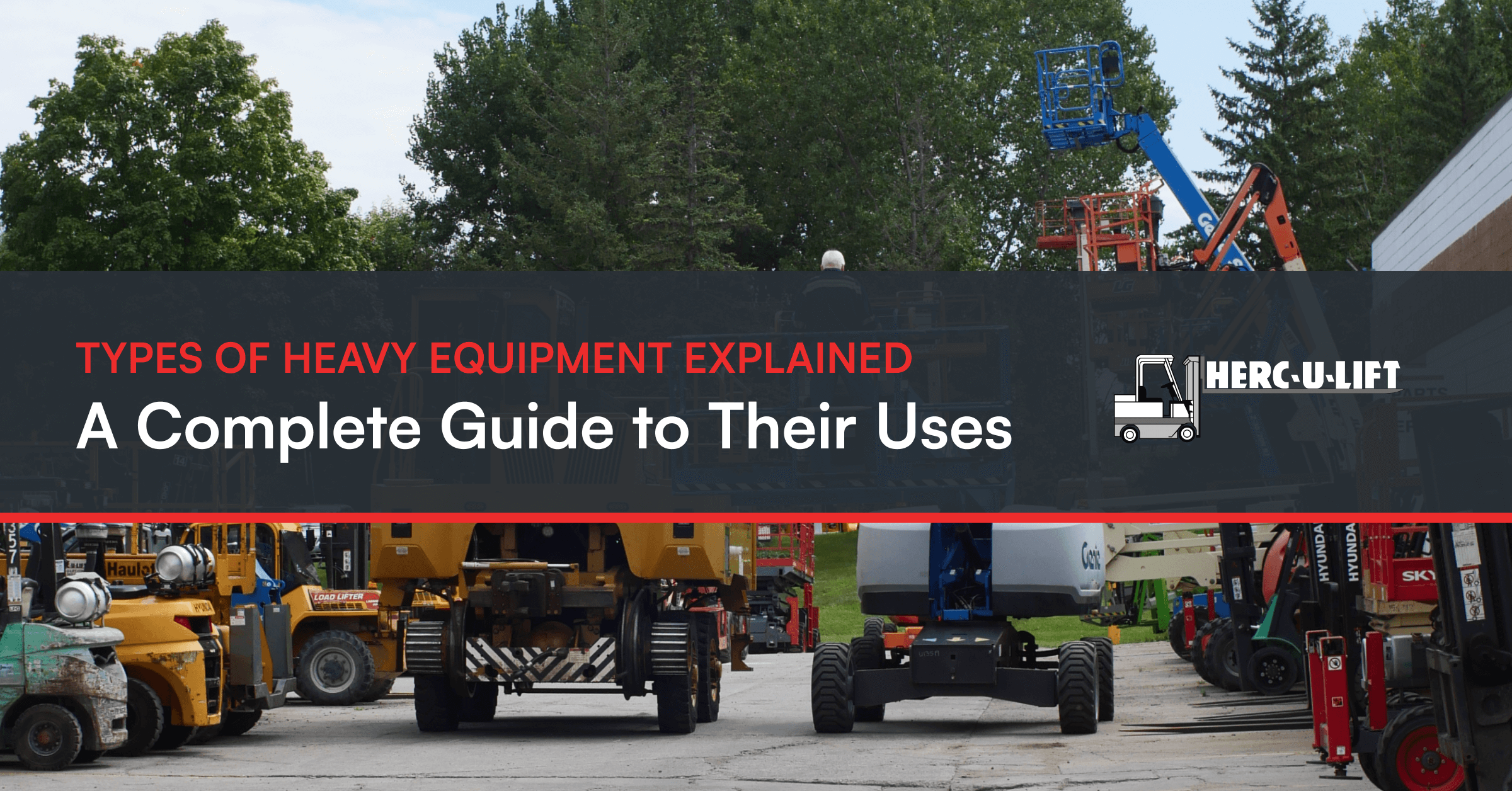Rail Car Mover Costs: Pricing Guide for New, Used, and Rental Units

Buying a rail car mover isn’t a casual purchase you check off a list. We’re talking about a serious capital purchase with price tags that can rival a house. Or even a small office building!
Not only are these machines expensive, but their costs can vary widely. On top of that, the secondary market and rental alternatives make it tricky to know what’s a fair deal.
That’s where this guide comes in.
We’ll help you compare new vs. used vs. rental options. We’ll even show you how to calculate the total cost of ownership (TCO). By the end, you’ll be ready to move forward with clarity and confidence.
Market Snapshot
The rail car mover market is concentrated among a few specialized manufacturers. Some top names in the industry include:
Trackmobile
One of the most recognized manufacturers in North America, offering a broad range of movers.ShuttleWagon (now part of Wabtec)
A major player with a strong dealer and service network.Zephir
A European innovator steadily expanding its presence in the United States.On the distribution and rental side, companies like Towlift, Wiese, and, of course, Herc-U-Lift are well-known providers. Secondary channels include auction houses and equipment brokers like Cajun Equipment and Machinio. These sources offer both used and refurbished units.
Price Breakdown: What Buyers Actually Pay
Heavy-duty railcar movers are more expensive because they are designed for nonstop, high-capacity switching in different environments. Premium models like the Trackmobile Atlas are rated for over 60,000 lbs of tractive effort with 360° camera visibility and climate-controlled cabs. You can check out selections at Herc-U-Lift and RailMover.com.
What pushes prices up?
Capacity: Higher tractive effort = higher price.
Options: AAR couplers, remote control, telematics, climate control cabs, emissions compliance.
Powertrain choices: Diesel-electric hybrids or lithium-ion packs cost more upfront but may save on fuel.
Lead times: New builds often require deposits and custom quoting, with lead times that can run months.

Total Cost of Ownership (TCO) – What To Calculate
Before signing a contract, it’s important to look beyond the rail car mover’s price. The true cost is also determined by fuel, maintenance, training, insurance, and even what you’ll recover when it’s time to resell.
The template below breaks down the main components of Total Cost of Ownership. With this, you can plan your budget realistically and avoid surprises down the road.
Total Cost of Ownership (TCO) Template:
| Component | Description | Notes |
| Purchase Price/Rental Fees | Upfront cost or recurring payments. Higher for new, lower for used/rental. | Actuals vary from $400k to $1M+ depending on the model. |
| Financing Interest / Lease Payments | Extra costs tied to borrowing or leasing over time. | Depends on loan terms, APR, and length of agreement; dealer financing may include fees or residual buyout options. |
| Depreciation Schedule | The gradual loss in value of the mover over its useful life. | A simple yearly percentage (e.g., straight-line over 7–10 years) is common. Actual rates should come from your accounting team or tax rules. |
| Fuel / Energy | Ongoing operating costs, diesel or electric. | Diesel is fuel-intensive. Electric costs more upfront but saves on energy and emissions. |
| Preventive Maintenance & Repairs | Service, upkeep, and unexpected fixes. Heavy use = higher costs. | Covers parts, labor, plus buffer for unplanned downtime. |
| Operator Training & Certification | Ensures safe, legal operation. | Includes onsite training and certification renewals. |
| Insurance & Permits | Liability, damage, and compliance coverage. | Must meet legal and operational requirements. Rail-specific liability may increase costs. |
| Transport, Storage, Site Modifications | Moving, securing, and adapting your site. | One-time and location-dependent. Heavy hauling and craning included. |
| Residual Value | What you can recoup at resale or trade-in. | Reduces net ownership cost |
Walkthrough Example

Negotiation & Buyer Checklist
Whether you’re buying or renting, a careful checklist helps you avoid future headaches. You want to confirm specs and maintenance history. Also, you want to negotiate extras like service packages or transport fees. Taking time upfront helps you get the best value for your money.
Pre-purchase checklist:
Ask vendors for:
Delivery & commissioning checklist:
Negotiation levers:
Risk, Compliance & Safety Considerations
Owning or renting a rail car mover also comes with certain responsibilities. From operator safety to insurance coverage, overlooking the fine print can cost far more than you expect. Safety, compliance, insurance, and warranties are all part of the deal. Skipping the details can be costly.
Operator safety
Rail car movers need trained, certified operators. Ongoing safety training and proper equipment usage are essential to keep crews and machines protected.Regulatory compliance
Compliance isn’t optional. Rail car movers must meet AAR standards. Local rail regulations usually vary by region and affect what equipment is approved for use.Insurance
Expect to carry general liability and equipment insurance. In some cases, specialized rail coverage. These policies help manage risk from accidents, damage, or downtime.Warranty fine print
Warranties on used or refurbished units often exclude wear parts and certain repairs. Always read the exclusions carefully so you know what’s really covered and what isn’t.

 →
→

